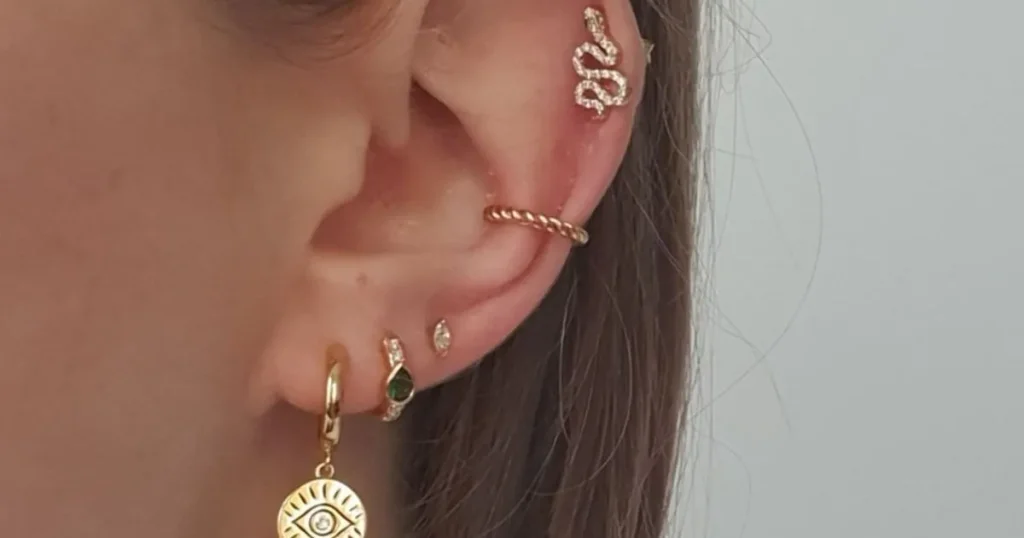What is a Cartilage Piercing?
A cartilage piercing is a type of body modification where a hole is made through the tough tissue of the ear’s cartilage. Unlike regular earlobe piercings, which only involve the soft tissue of the earlobe, cartilage piercings go through the harder, denser cartilage tissue. This makes them more complex and sometimes requires more prolonged healing than earlobe piercings.
Difference between Cartilage and Helix Piercings
Cartilage Piercings Explained
Cartilage piercings involve piercing the tough, elastic tissue that shapes the outer ear, providing structure and support. Cartilage piercings can encompass various locations on the ear, including the helix, tragus, conch, and more. These piercings tend to be more intricate due to the denser nature of cartilage compared to the softer earlobe tissue. This density can also contribute to longer healing times and potential discomfort during the piercing process.
Helix Piercings Defined
Helix piercings, explicitly targeting the outer curve of the ear, are famous for their versatility and aesthetic appeal. They can be single or multiple, allowing for creative jewelry arrangements. Unlike cartilage piercings, helix piercings typically involve less discomfort during the piercing procedure due to the thinner tissue.
Cartilage Piercing Pain: Do Cartilage Piercings Hurt?
While it’s natural to feel some level of discomfort during a cartilage piercing, it’s important to remember that everyone’s pain tolerance is different. The piercing location, the expertise of the piercer, and the type of jewelry used can all influence the level of discomfort. Rest assured, the pain is usually manageable and temporary, and the end result is a beautiful, unique piercing.
Types of Cartilage Piercings
Helix Piercing
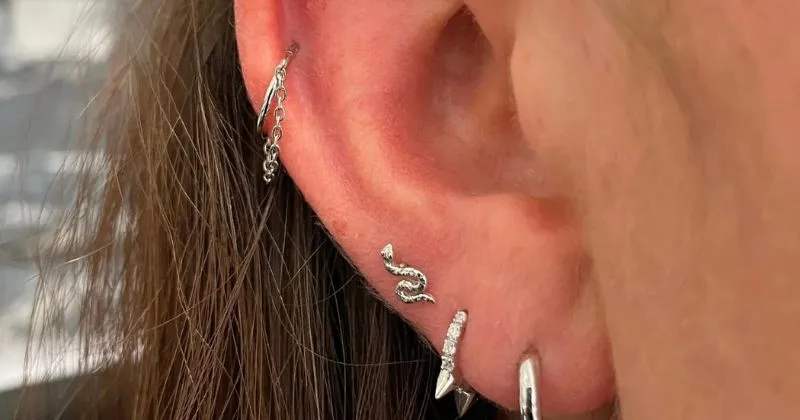
A helix piercing is any piercing done on the outer rim of the ear’s cartilage. It’s a versatile piercing can be placed anywhere along the helix, allowing for various styling options. Helix piercings are typically adorned with studs, rings, or barbells and can be single or multiple. Healing times may vary but usually take several months.
Forward Helix Piercing
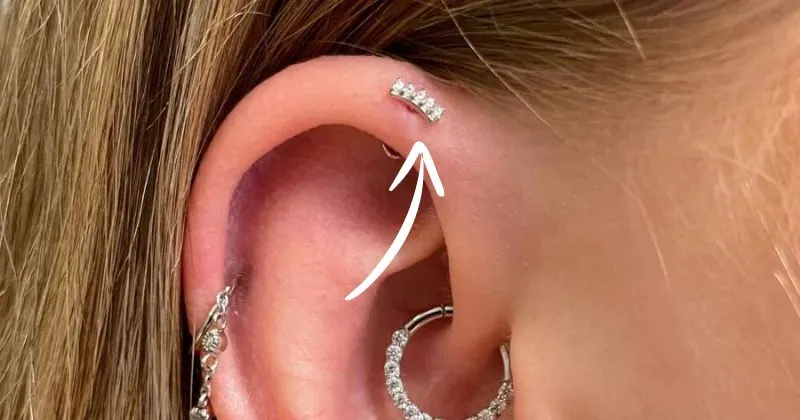
The forward helix piercing is located closer to the face on the upper front of the ear’s cartilage. It’s a trendy piercing that can be done singly for a subtle look or in multiples for a dramatic effect. Jewelry options for forward helix piercings include studs, hoops, and small barbells.
Tragus Piercing
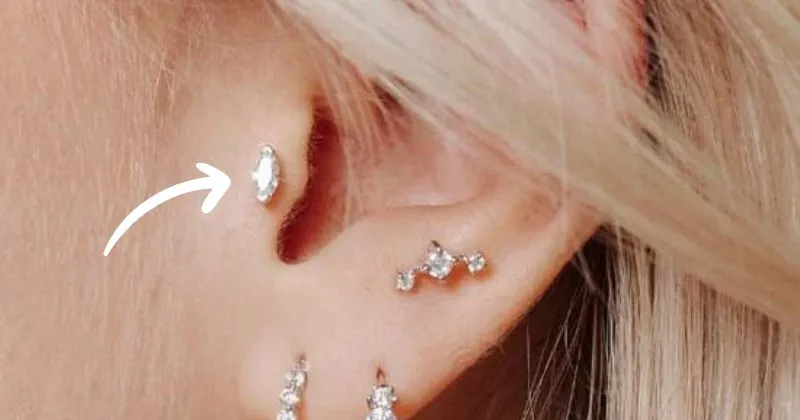
The tragus is the small, triangular-shaped cartilage in front of the ear canal. Tragus piercings are known for their unique placement and can complement other ear piercings. They are usually adorned with small studs or rings. Due to the thickness of the tragus cartilage, healing may take several months.
Industrial Piercing
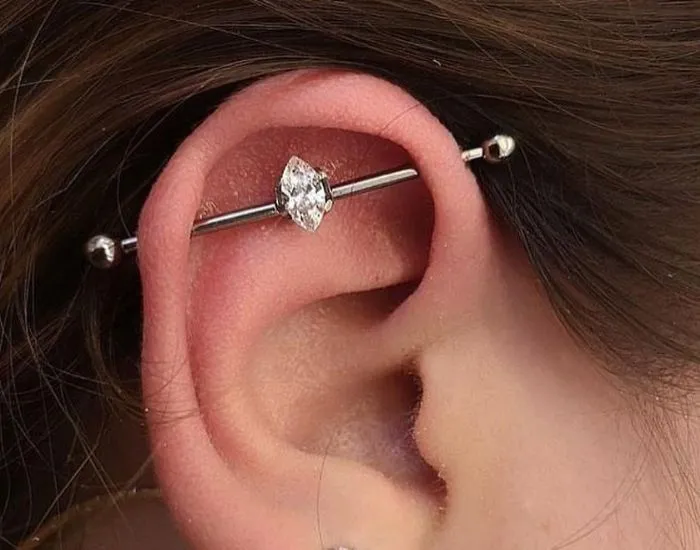
An industrial piercing involves two separate piercings connected by a single piece of jewelry, typically a long barbell. The piercings are usually placed on opposite ends of the upper ear cartilage, creating a striking and edgy look. Industrial piercings require careful placement and longer healing times due to the complexity of the piercing.
Daith Piercing
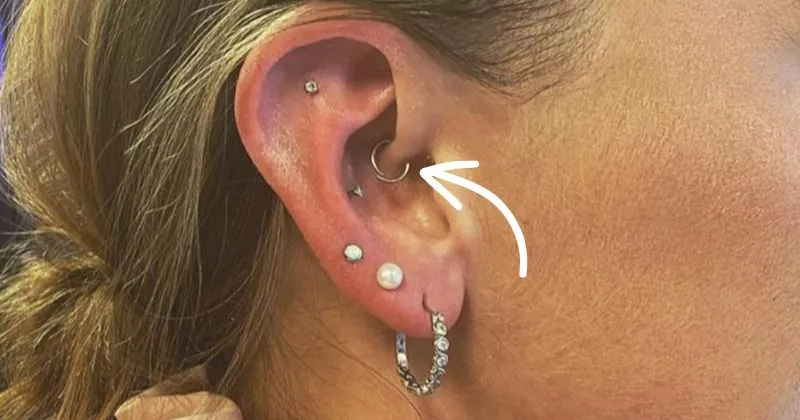
The daith piercing is located in the innermost fold of the cartilage, near the ear canal. It’s a popular piercing known for its aesthetic appeal and potential for unique jewelry styles, such as captive bead rings or curved barbells. Daith piercings may take several months to heal completely.
Conch Piercing
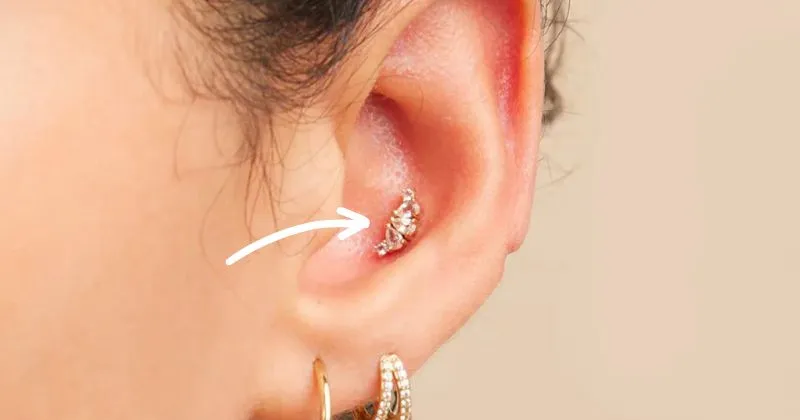
A conch piercing can be either an inner conch (located in the center of the ear’s large concave shell) or an outer conch (situated on the outer edge of the conch). Inner conch piercings are typically adorned with oversized studs or hoops, while outer conch piercings offer options for creative jewelry arrangements. Healing times vary depending on the location and type of conch piercing.
Anti-Tragus Piercing
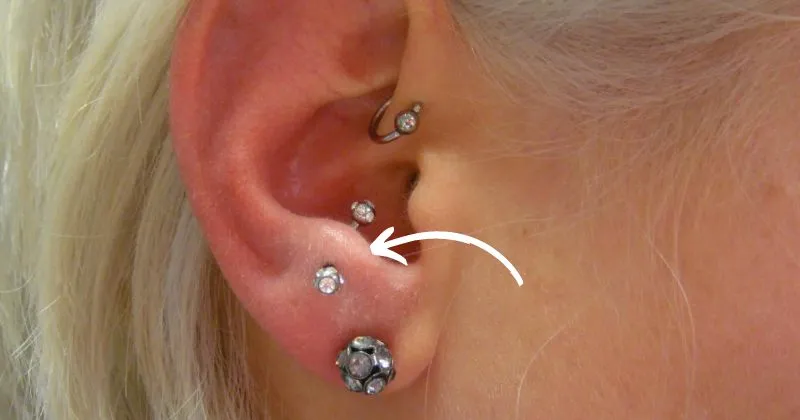
Opposite the tragus, the anti-tragus is a less common but distinctive piercing location on the ear’s cartilage. Anti-tragus piercings are usually adorned with small studs or rings and require careful placement due to the thickness of the cartilage.
Rook Piercing
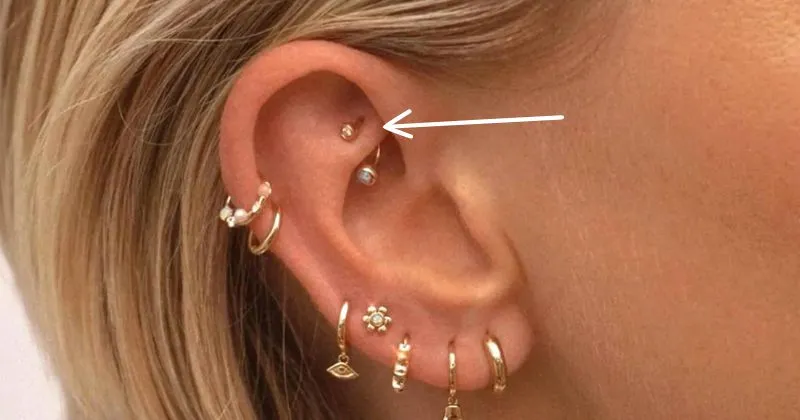
A rook piercing is situated in the cartilage fold above the tragus, creating a unique and stylish look. Rook piercings are often adorned with curved barbells or captive bead rings. Healing times for rook piercings can range from several months to a year.
Snug Piercing
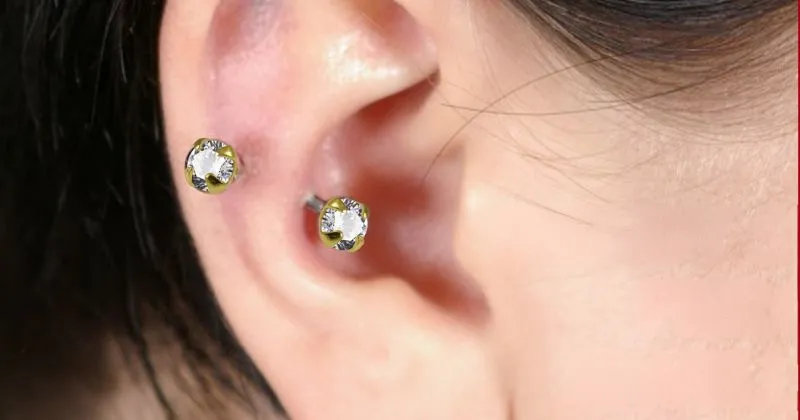
A snug piercing runs through the anti-helix, the ridge of cartilage just above the anti-tragus. It’s a less common piercing but can add a subtle yet distinctive touch to the ear’s overall appearance. Snug piercings are typically adorned with small curved barbells or rings.
Orbital Piercing
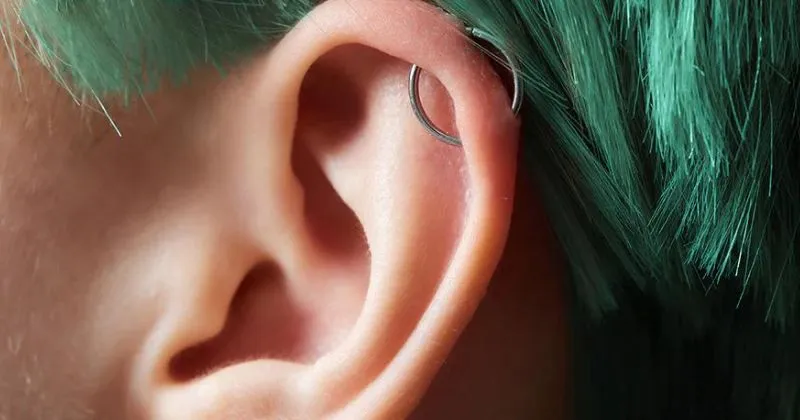
An orbital piercing is a unique type of cartilage piercing that involves two holes connected by a single piece of jewelry, creating a ring-like appearance around a portion of the ear’s cartilage. This piercing is named after its resemblance to the orbit (eye socket) when viewed from certain angles. It’s a bold and eye-catching choice for those looking to add a distinctive touch to their ear piercings.
Healing Time: How Long Does Healing Take?
The healing time for cartilage piercings is typically longer than that for earlobe piercings. On average, cartilage piercings can take six months to over a year to fully heal. Factors affecting healing time include proper aftercare, avoiding trauma to the piercing, and following the guidance of your piercer.
Aftercare Guidelines for Cartilage Piercings
Proper aftercare promotes healing and reduces the risk of infection or complications with cartilage piercings. Here are some essential aftercare guidelines to follow:
1. Cleaning: Use a saline solution or a gentle, non-alcoholic cleanser to clean the piercing twice daily.
2. Avoiding Irritants: Avoid touching the piercing with dirty hands or exposing it to hair products, makeup, or harsh chemicals.
3. Choosing Jewelry: Opt for high-quality, hypoallergenic jewelry to minimize the risk of allergic reactions or irritation.
4.Avoiding Trauma: Avoid sleeping on the pierced ear and activities that may put pressure or strain on the piercing.
5. Consulting Your Piercer: If you notice any signs of infection or unusual swelling, consult your piercer or healthcare professional promptly.
Your choice of an ear cartilage piercing is more than just an adornment; it’s a reflection of your style and individuality. Whether you opt for a single helix piercing for a minimalist look or an industrial piercing for a bold statement, your choice of cartilage piercing is a unique expression of who you are.
Remember, cartilage piercings are a form of self-expression and should be chosen thoughtfully. Take your time, do your research, and enjoy the journey of discovering and enhancing your unique style through ear cartilage piercings. If you’re ready to plunge into cartilage piercings, consult a professional piercer and prioritize proper aftercare for a safe and satisfying piercing experience.
Frequently Asked Questions (FAQs)
Are cartilage piercings more painful than earlobe piercings?
Due to the denser nature of cartilage tissue, cartilage piercings are often associated with more discomfort during the piercing process than earlobe piercings.
How long does it take for a cartilage piercing to heal?
Healing time for cartilage piercings can vary but typically ranges from 6 months to over a year, depending on factors such as aftercare, piercing location, and individual healing responses.
Can I change the jewelry in my cartilage piercing during the healing process?
It’s generally recommended to wait until the piercing is fully healed before changing jewelry to avoid complications or delays in the healing process.
What should I do if my cartilage piercing becomes infected?
If you suspect an infection in your cartilage piercing, it’s crucial to seek medical advice promptly. Avoid removing the jewelry yourself, as this can trap the infection, and follow your healthcare professional’s guidance for treatment.
Are there specific activities I should avoid with a new cartilage piercing?
To prevent irritation or infection, it’s advisable to avoid sleeping on the pierced ear, touching the piercing with dirty hands, and exposing it to hair products, makeup, or harsh chemicals during the healing process.
Can I swim or engage in water activities with a new cartilage piercing?
To reduce the risk of infection, it’s generally recommended that you avoid swimming or soaking the piercing in pools, hot tubs, or natural bodies of water until it is fully healed.
What are some signs that my cartilage piercing is healing correctly?
Signs of proper healing include reduced redness, swelling, discomfort around the piercing site, and the formation of a crust that indicates the beginning stages of healing.
How often should I clean my cartilage piercing?
To maintain cleanliness and promote healing, it is typically recommended that you clean your cartilage piercing twice daily with a saline solution or a gentle, non-alcoholic cleanser.
- How to Use Aloe Vera for Acne: A Comprehensive Guide - June 1, 2024
- Jojoba Oil for Hair: How to Use for Maximum Benefits - May 19, 2024
- 8 Benefits of Jojoba Oil for Skin: The Ultimate Guide - May 18, 2024

